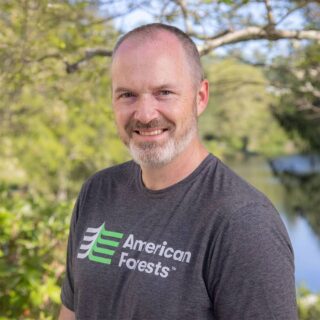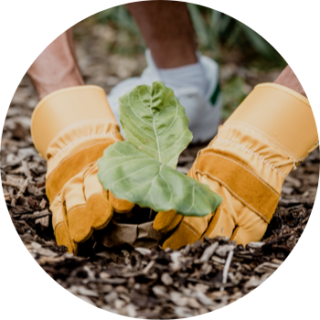Hakalau’s Road to Regeneration
Hakalau Forest National Wildlife Refuge, a 34,000-acre parcel on the slopes of Mauna Kea, is one of the most outstanding stands of mountain rainforest left in Hawaii. The refuge’s landscapes, which range from lush, rainy habitats to dry, high-altitude forests, are home to dozens of rare and endangered birds and plants.
Hakalau isn’t all tropical paradise, however. Thousands of acres within the refuge are abandoned cattle pasture, denuded of trees and choked with invasive weeds. From 1992 to 1996, American Forests supported the planting of 150,650 koa trees — a keystone species in Hawaiian forests — to restore these degraded landscapes and boost habitat for endangered birds.
In the years that have followed, these plantings have flourished. Endangered birds including the ‘i’iwi, or scarlet honeycreeper, and the ‘akiapōlā‘au, a honeycreeper with golden brown coloration, have returned to once-barren areas — making this one of the world’s best examples of native forest restoration. The work to restore Hakalau and its feathered inhabitants, however, is far from over.
Hakalau’s Birds Face Heightened Risks
Avian malaria, carried by nonnative mosquitoes, has caused the extinction of several species of Hawaiian birds and is in part responsible for the steep decline of dozens more. Many of Hawaii’s unique birds are clinging to existence in mountain refuges such as Hakalau, which have historically been too cold for mosquitoes. But now, as Hawaii’s climate rapidly heats up, mosquitoes and the deadly diseases they carry are making inroads in these mountain shelters.
A Forested Corridor for Hakalau’s Birds
American Forests is now working with the Mauna Kea Watershed Alliance and Hakalau’s land managers to plant a migration corridor running up the slopes of Mauna Kea. This project, called the Kanakaleonui Bird Corridor, will connect Hakalau with the high-elevation forests of Mauna Kea State Forest Reserve, which lies above the “mosquito line.” Funneling rare birds to higher-elevation forests represents their best hope for survival.
In 2021, these groups, with funding from Salesforce, restored 20 acres of degraded forest in the bird corridor by planting 6,000 koa and understory plants. More trees will be planted in future seasons. These plantings are supported by a newly established, four-person “strike team,” which will return to the bird corridor every spring to plant. This project will also focus on community engagement by enlisting volunteers to help pull weeds, collect seeds and plant seedlings.
Boosting Nursery Capacity for Hakalau
There’s more to forest restoration than just planting trees. A single nursery supplies the vast majority of Hakalau’s trees, but its knowledgeable nursery manager recently retired. American Forests funded the hiring of a nursery technician who will learn the specialized techniques for germinating and raising native plants.


